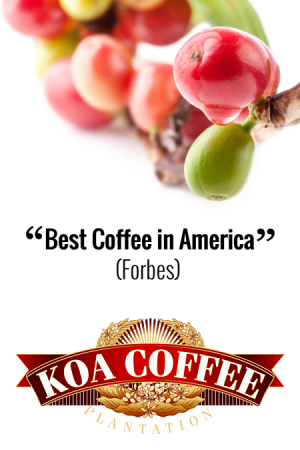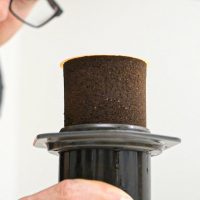Learn Coffee with Gwilym: #3 Dosing Mistakes
Improve your barista skills in 2015. We are releasing a new video every week. Don't miss it and subscribe today: http://europeancoffeetrip.com/gwilym
#3 DOSING MISTAKES:
A major influence in the strength and flavour of espresso is the relationship between the amount dosed into the portafilter and the amount of water used to brew the espresso. Not being consistent with the amount dosed into the portafilter is a common dosing mistake and not knowing the amount of water used is a common brewing mistake, without this consistency and knowledge it is much harder to get the best from your coffee.
About the project:
The knowledge of baristas is improving quickly but we need a strong foundation, if we get the basics right we will progress faster and better. The goal of the project is to explain the techniques of the modern barista in an easy to understand, inclusive and forward thinking manner. It's a mutual project of European Coffee Trip and Gwilym Davies.
Gwilym Davies is a World Barista Champion from 2009 in Atlanta, World Coffee Events Head Judge and Certified SCAE Trainer. Gwilym is also well know for being a co-founder and director at Prufrock Coffee.
About Gwilym Davies:
– World Coffee Events Head Judge
– World Coffee Events Representative
– 2009 World Barista Champion
– Certified SCAE Trainer (AST)
Our dear sponsors:
Nuova Simonelli – http://www.nuovasimonelli.it/
Gill's Coffee – http://www.gills.cz/
Subtitles created by:
ENGLISH: Lucie Marková (Kávové Listy)
CZECH: Lucie Marková / Adéla Demlová
ITALIAN: Cristina Caroli (SCAE Italia)
POLISH: Ana Wolsztajn
HUNGARIAN: Enikő Takács
GREEK: Despina Santorineou
TRADITIONAL CHINESE: Victor Chih Kai Yeh
VIETNAMESE: Vincent Tran
JAPANESE: Emi Fukahori
ESTONIAN: Pille Lõhmus
RUSSIAN: Nicholas Chistyakov
THAI: NutRada Kunavivattananon
GERMAN: Daniel Koening
KOREAN: Jay Roh (BWIssue)
BULGARIAN: Krasimir Kovachev
SPANISH: Fabiola Solano J. (Soy Barista)
Find out more at:
http://www.facebook.com/EuropeanCoffe…
Tweets by EuroCoffeeTrip
http://instagram.com/EuropeanCoffeeTrip





Improve your barista skills in 2015. We are releasing a new video every week. Don’t miss it and subscribe today: http://europeancoffeetrip.com/gwilym
#1 COFFEE DISTRIBUTION:
The first video is about the effective distribution of coffee from the grinder into the filter basket before tamping. To have a consistently even extraction without ‘channelling’ you need an effective and consistent technique for distributing the coffee evenly throughout the filter basket, leaving a flat and level surface before tamping.
This video looks at what Distribution is and how to do it effectively and consistently.
#2 TAMPING MISTAKES:
The second video in our series looks at Tamping, an area of barista technique that has been over complicated and had far too much attention paid to it. Tamping is simply the applying of pressure to the coffee grinds to expel pockets of air and leave a level flat surface, the only requirements in achieving this are that you are consistent, quick, clean and do not damage yourself, the portafilter or the tamper.
#3 DOSING MISTAKES:
A major influence in the strength and flavour of espresso is the relationship between the amount dosed into the portafilter and the amount of water used to brew the espresso. Not being consistent with the amount dosed into the portafilter is a common dosing mistake and not knowing the amount of water used is a common brewing mistake, without this consistency and knowledge it is much harder to get the best from your coffee.
#4 INSERTING HANDLE INTO THE GROUP (February 1)
#5 HANDLING THE CUP (February 8)
#6 CLEANING THE MACHINE (February 15)
About the project:
The knowledge of baristas is improving quickly but we need a strong foundation, if we get the basics right we will progress faster and better. The goal of the project is to explain the techniques of the modern barista in an easy to understand, inclusive and forward thinking manner. It’s a mutual project of European Coffee Trip and Gwilym Davies.
Gwilym Davies is a World Barista Champion from 2009 in Atlanta, World Coffee Events Head Judge and Certified SCAE Trainer. Gwilym is also well know for being a co-founder and director at Prufrock Coffee.
About Gwilym Davies:
– World Coffee Events Head Judge
– World Coffee Events Representative
– 2009 World Barista Champion
– Certified SCAE Trainer (AST)
Our dear sponsors:
Nuova Simonelli – http://www.nuovasimonelli.it/
Gill’s Coffee – http://www.gills.cz/
Find out more at:
http://www.europeancoffeetrip.com
http://www.facebook.com/EuropeanCoffeeTrip
http://twitter.com/EuroCoffeeTrip
http://instagram.com/EuropeanCoffeeTrip
So as you get to the prefered weight you remove the cup?
+Izmir Fariz +Magnus Frostell +Indie Intellect thanks for the replies 🙂
I usually stop about 2-3g before the desired amount, it depends how quick the scales are.
For light roasts I use 2g of water for every 1g of coffee I use
For darker roasts I use 1.5g of coffee for every 1g coffee I use
then make adjustments according to taste.
I am making some information sheets that will be sent out to all subscribers
+gwilym davies Information sheets? Brilliant, looking forward to those! Cheers Gwilym!
+Izmir Fariz pleasure, they are written we just have to make hem pretty.
+gwilym davies how do you define “light rost” vs “darker rost”? what are the main characteristics for light and dark do to your oppinion?
+Magnus Frostell difficult question!!
It is hard to say without showing, the ones in the video at the start are light. Whether they are roasted quickly or slowly matters too.
Light roast has more fruit flavour, medium more chocolate and nuts, dark has more bitter sweet flavours
A question for Gwilym;
When you extract you are using two cups under both streams of coffee. Would you do so also to serve to a single customer? Also, are you using the weight of ground for two people when doing this?
I would like to weigh both cups but sometimes it is difficult. I would do this for a single customer.
I do it for consistency as the amount of water used has such an influence on the amount extracted (flavour), I usually talk about total beverage weight, meaning both streams of coffee. I do this because I mostly use double baskets
Thx for the Lessons Gwilym, very nice to share your knowledge with us. Can you please share your doses and prefered ratios for espresso shots (single and double portafilter) when extracting a ligher roast coffee…
For light/ medium roast I start with 1g dose to 2g beverage yield (50%)
For darker roasts I start with 1g dose to 1.5g beverage yield (66%)
I also like ‘filter’ roasts at 1g dose to 2.7g beverage yield (36%)
Hi, Gwilym, thanks for sharing your thoughts on dosing.
I have a question. Base on what you said in the video, if the weight of the extracted coffee is less than the weight of the dose, it is considered a ristretto. There must be a range to where you make the decision. Says, if the dose is 20g and the extracted coffee weight 19g, does it considered a ristretto? Thanks.
Definitely 🙂 The definition between what is an espresso and what is a ristretto is disputed territory but 20g/ 19g is definitely a ristretto. I tend to see anything above 66% (1g coffee to 1.5g liquid) as ristretto.
20g dose and 19g beverage yield is 105% EBF (or 1g coffee to:0.95g liquid)
Hi Gwilym, awesome videos. I’m interested in the digital scale you’re using — it looks perfect for weighing in the portafilter. Which model is it? Thanks!
+François Bouffarde such a late reply, sorry : (
They are OB1000 from On Balance, Dalmar sell them in Europe.
The Acaia are so much better but not affordable for lots of people
+gwilym davies Thanks! In the meantime, I realized that the balance platter is probably just a tamping mat, right?
“I hope you know =)”
Very nice video. You have a great charisma. Thank you!
My Question: How can I get 20 grams of coffee grounds in the filter?
Depending on the brand, there are between 12 (dark) and 16 (light) grams. Changed the grind the density?
DVminni get a larger basket like a triple basket. But the thing is it just depends on the basket you have. My VST double basket can hold about 23g if I really push it, but I usually keep it around 18
Hello Gwilym , may I have question to you. I have been trained by our supplier roastery to create ristrettos as a good coffee – thus I know how to find desired taste in these 1.0 – 1.2 ratios. Ii know how it should behave during the extraction to get the taste of the beans into the cup. At the same time I struggle a bit to setup higer ratios because it seems to me, taht I have blondie really quicly and somehow I am getting bitter results that I look for. Therefore I want to ask you how do you setup the espresso? Do you set the variables to the stady state (20/40) and work just with the finest of grounding and time or you also move with doze but still keep the ratio? Thank you for your advice. BTW I have met you in Brno in Coffee week where you and your wife had a great lecture about water (except that PR for one Czech company over there :D) so I would like to thank you also for this activity of yours.
+Tomáš Niederle these ratios are too sharp and salty for lots of coffees but a darker roast with low density coffees like Brasil can work. It really depends on the coffee
Hi Gwilym,
For a double shot, I am using 18 g in and getting 34-36 g out. The confusing part is that this finished 34-36 g of liquid is only yielding about 30 ml of espresso. I was told that I should be yielding somewhere around 45-60 ml.
Should I not worry about the volume of fluid and continue to focus on the weight of the extracted espresso?
Thank you!
That little girly-tamp at 0:56 is 30-40lbs?
Excellent series of videos. Thank you!
Thank you. Glad you like it. What did you find the most useful?
“And use our eyes to look at the numbers” lol